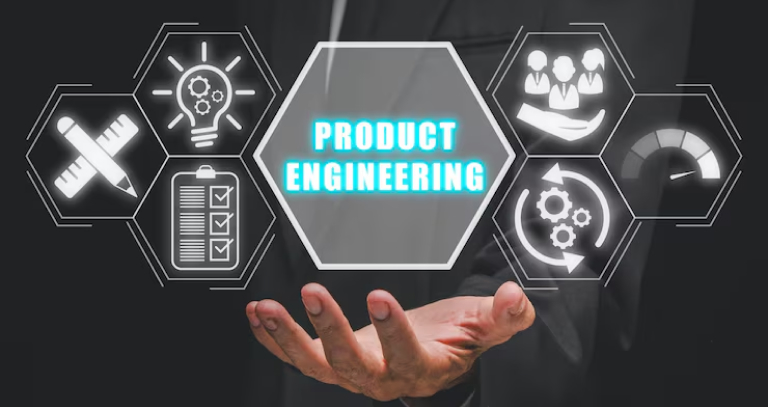I Want To Create An App, Where Do I Start?
Ditstek Blogs
You have an app idea that could change lives—or at least make them a whole lot easier but wondering how to start? Don’t worry, you are not alone.
Every game-changing app, from ride-hailing giants to social media powerhouses, started with someone asking the same question. The journey from “aha!” moment to a fully functioning app is an exciting mix of creativity, strategy, and technology.
But here’s the catch—jumping in without the right plan can lead to frustration, wasted resources, and, well, a great idea that never sees the light of day.
Creating an app isn’t just about coding—it’s about solving real-world problems and understanding your audience. Whether you’re an entrepreneur looking to disrupt the market or a business leader wanting to boost customer engagement, the first step is clarity:
- What problem does your app solve?
- Who is it for?
- Why should they care?
This isn’t just tech talk—it’s business survival. Apps aren’t built in silos; they’re built to fit into people’s lives. Get it wrong, and your app could become another forgotten icon buried on someone’s phone. Get it right, and you’re looking at the next big thing.
Before you jump into designs, features, or budgets, let’s focus on the most important part: the basics. Ready to uncover what it takes to turn your idea into reality? Let’s dig in.
Create a Profitable Mobile App Faster and More Affordably!
Build your app in less time and at a lower cost than traditional solutions with DITS.
I Have an App Idea, Where Do I Start?

Here are the steps to follow -
1. Validate Your Mobile App Idea
Here’s a question that can make or break your app idea: What’s the point of making an app?
Necessary? Absolutely.
Every successful app starts with a clear purpose. Without one, it’s like throwing spaghetti at the wall—sure, something might stick, but is that really a strategy?
Your app’s purpose is why. Why does it exist? What specific problem does it solve, and for whom? This clarity isn’t just for you—it’s for the investors you pitch to, the developers you hire, and, most importantly, the users you hope to attract.
Find the Problem You’re Solving
Think about the apps you use every day. Uber solves the hassle of finding a ride. Instagram lets you share life’s moments. Duolingo helps you learn languages on the go. Notice the pattern? The best apps don’t just exist—they solve problems.
Ask yourself:
- What pain point am I addressing?
- How does my app make life better, easier, or more enjoyable?
- Is this a problem worth solving?
Who’s This For, Anyway?
Now that you know why your app exists, it’s time to figure out who it’s for. Spoiler alert: “everyone” is not an audience. The more specific you get, the better.
Start by creating a user persona—a detailed profile of your ideal user. Think about:
- Demographics: Age, gender, location, occupation
- Psychographics: Interests, hobbies, values, lifestyle choices
- Behavior: How tech-savvy are they? What other apps do they use?
Niche vs. Broad Appeal
A smaller group of highly engaged users can be far more valuable than a large, indifferent crowd.
Avoid the “I Think” Trap
When defining your audience and purpose, it’s easy to rely on assumptions. Instead of relying on assumptions like I think this feature will be popular, I think people will use this every day, you should validate your app ideas with market research, surveys, or even early user interviews. Your opinion doesn’t matter as much as your users’ needs.
Got an App Idea? Let’s Make It Happen!
Reach out for a free consultation and see how we can turn your idea into a customized mobile app solution.
2. Market Research
Creating an app without market research is like setting sail without a map. Why is it so crucial? Because not every “brilliant idea” resonates with the people you’re trying to reach. It’s easy to get attached to your concept, but your app isn’t about you—it’s about solving a problem for your users. And that’s where market research becomes your secret weapon.
Know Your Competitors
Think your app idea is unique? Spoiler alert: it might not be. And honestly, that’s okay! A crowded market often means there’s a real demand, which is a great sign. But here’s the trick—if you want to stand out, you need to understand your competition inside and out. What are they doing well? Where are your competitors falling short? A little research can reveal real gaps that your app can fill.
Discover What Users Truly Want
Market research isn’t just about crunching numbers and looking at spreadsheets (though, yeah, those help). It’s about truly understanding your potential users. What’s keeping them up at night? What drives them crazy about the apps they’re already using? What would make their lives a whole lot easier? These insights are pure gold. They give you the key to building an app people actually want—not just one they’ll use because they have to. When you tap into what really matters to your users, you’re on your way to something special.
Identify the Unique Selling Point (USP)
Your USP is what makes you stand out—a clear, undeniable reason why users should choose your app over others. USP could be a unique feature, an exceptional user experience, or a combination of both. Your USP should be crystal clear, easy to explain, and, most importantly, something that adds real value to your users’ lives.
USP Checklist for Your App
| Aspect | Key Question | Example |
| Core Problem Solved | What user problem does your app uniquely address? | Stress-free meal planning for busy users |
| Unique Features | What makes your app’s functionality stand out? | AI-powered personalized meal suggestions |
| User Experience (UX) | How does your app offer a superior experience? | Quick, simplified 3-step planning |
| Emotional Connection | How does your app resonate with user values? | Promotes healthy living and self-care |
| Market Differentiation | What market gap does your app fill better than others? | Combines meal prep and fitness tracking |
Avoid Costly Mistakes
Here’s a harsh truth: skipping market research can cost you—big time. Imagine pouring months of effort and resources into building an app only to realize there’s no market for it. Market research is what helps you avoid this. It makes sure your app has a clear purpose, speaks to the right audience, and stands a better chance in a competitive market. It’s the kind of prep work that saves you from a lot of headaches later on.
3. Decide the Features to Include in Your App
When planning your app's features, it's easy to want to include everything. However, more doesn’t always mean better. Overloading your app with unnecessary features can make it confusing for users.
So, how can you identify the right features for your app?
Focus on functionality that directly addresses your users’ needs, simplifies their tasks, or enhances the core purpose of the app.
Start with the essentials—those must-have features that make your app functional and relevant. For instance, a food delivery app can’t exist without features like order placement, payment options, and live tracking.
But beyond the basics, think about what sets you apart. What can you offer that competitors don’t? Also, don’t forget scalability. If you plan to add social sharing or AI-driven personalization in the future, ensure your current design and tech stack can accommodate these upgrades.
Here’s a quick way to prioritize your app’s features:
| Category | Example Features | Priority |
| Core Features | User registration, search functionality, payment gateway, push notifications | High |
| Differentiators | AI-based recommendations, gamification elements, voice-enabled navigation | Medium |
| Nice-to-Haves | Social sharing, custom themes, offline mode | Low |
4. Think About the Monetization Strategy
Alright, let’s be real—you’re not just building an app for the fun. At some point, it needs to start making money. Crafting a monetization strategy isn’t as simple as adding ads or charging a fee. It’s about creating a system that feels natural to users and delivers value while generating steady revenue.
Ask yourself: What problem does my app solve, and how much would users be willing to pay for that solution? This will help you decide on pricing models and which features to monetize.
Here are some popular monetization strategies to consider:
| Monetization Strategy | Description | Example |
| Freemium | Think of it as a “try-before-you-buy” approach. Users get access to a basic version for free, with premium features locked behind a paywall. It’s a great way to hook users, but the premium content has to be compelling enough to convert them. | Spotify |
| In-App Purchases (IAPs) | Whether it’s buying coins in a game or unlocking exclusive tools in a productivity app, IAPs offer users flexibility. But balance is key—no one likes an app that feels like a never-ending sales pitch. | Candy Crush |
| Subscription Models | Subscriptions can provide predictable revenue while giving users a sense of ongoing value. This works especially well for services like fitness apps or streaming platforms. | Netflix or Duolingo |
| Ad Revenue | If your app is free, ads can bring in income without charging users. | YouTube |
| Paid Apps | The simplest model—you charge a one-time fee for access. Users need to pay monthly or yearly to access the unique features of the app. | Facetune or Minecraft |
| Sponsorships or Partnerships | This monetization strategy helps you generate money by collaborating with brands that align with your app’s audience. | MyFitnessPal |
Ready to Build an App That Generates Revenue?
Let’s make it happen! Validate your idea for free with a consultation from an expert in mobile app solutions.
5. Choose the Right Development Approach
Selecting the right development approach is a critical step—it lays the foundation, determines functionality, and ensures your app aligns with your vision.
There are mainly three development approaches to consider: native, hybrid, and web development. Each has its own pros and cons, and the best choice depends on your app’s unique requirements and goals.
Native Development is like designing a custom skyscraper for a specific city—it’s tailored exclusively for a single platform (like iOS or Android) and offers top-notch performance and user experience. If your app requires heavy graphics (think gaming or AR) or must integrate deeply with device features, native is your go-to. But just like a custom building, it’s a bigger investment—you’ll need separate teams for each platform.
Hybrid Development is your versatile, multi-purpose office building. It allows you to create one app for multiple platforms using a single codebase. It’s faster and cheaper than native but might not deliver the same level of polish or integration. Perfect for apps that prioritize reaching a wide audience quickly.
Web Development is like setting up a modular workspace—it’s lightweight, accessible through a browser, and doesn’t require users to download anything. It’s cost-effective and platform-independent but lacks the immersive experience and access to device features native apps provide. Think utility apps or MVPs where functionality is the priority over flair.
6. Development Process: From Prototype to Launch

Building an app is like crafting a masterpiece—it takes time, precision, and a solid roadmap. The journey from an idea to a fully-functional app isn’t a single sprint; it’s a series of deliberate, well-planned stages. Let’s break it down step by step.
Prototype: Your App’s First Sketch
Think of the prototype as the blueprint of your app—a tangible way to bring your concept to life. Using wireframes or mockups, you map out your app’s user interface (UI) and essential features. At this stage, the focus isn’t on functionality but on the visual flow and user experience. Tools like Figma or Adobe XD come in handy here, helping you gather feedback before diving into development.
Minimum Viable Product (MVP) Development
An MVP (Minimum Viable Product) is like your app’s first draft—a functional version with just the essential features. MVP development includes only the essential features, giving you the chance to test your concept, see how users react, and gather valuable feedback, all without draining your budget.
App Development
Now comes the heavy lifting. Developers work their magic, transforming your prototype into a working app. Whether it’s native development for iOS and Android or a cross-platform approach, this phase involves coding, integrating features, and ensuring the app’s backend and frontend work seamlessly. Regular testing at this stage ensures bugs are squashed early.
App Testing
Before hitting the market, your app needs to pass rigorous testing. This includes functional testing, usability testing, performance testing, QA testing and security checks. Remember, even the smallest glitch can cost you users. Tools like Selenium or Appium help automate testing, but manual testing remains crucial for ensuring the app feels intuitive and reliable.
Pre-Launch Preparations
While your app undergoes final tweaks, your marketing team should gear up for a stellar launch. This includes creating a landing page, running pre-launch campaigns, and optimizing the app store listing with compelling descriptions, screenshots, and keywords. The goal is to generate excitement and attract early adopters.
Launch
The big day is here! Your app goes live on app stores, ready to make its debut. But remember, the launch isn’t the end—it’s just the beginning. Monitor user feedback, track performance metrics, and plan for updates to keep your app fresh and relevant.
How Much Does It Cost to Create an App?
The million-dollar question—or maybe not quite a million, but still an important one: how much does it really cost to create an app? Well, the answer depends on several factors, from the complexity of your idea to the development approach you choose. Let’s break it down.
First off, what type of app are you building? A simple app with basic features (think calculators or to-do lists) might cost you anywhere between $10,000 to $50,000. But if you’re diving into a more complex arena—like e-commerce, social networking, or gaming—the price can quickly climb to $100,000 or more. Want advanced functionalities like artificial intelligence, AR/VR, or real-time tracking? Be prepared to stretch that budget further.
Next, where are you sourcing your talent? Hiring developers in North America or Western Europe will cost significantly more than outsourcing to regions like Eastern Europe or Asia. The hourly rate for app developers can range from $30 to $150+, depending on their location and expertise.
Then there’s the platform question: iOS, Android, or both? Each platform requires different development tools and time, which will influence the cost. Cross-platform solutions like React Native can save you some bucks if you’re aiming for both.
Now, don’t forget about design. A great user experience (UX) isn’t optional—it’s a must. Professional design work can add $5,000 to $30,000 to your budget, depending on how sophisticated you want your app to look and feel.
And we’re not done yet! You’ll need to budget for post-launch costs like marketing, app store fees, updates, and ongoing maintenance. This could add another 15-20% of your total development cost annually.
So, what’s the ballpark?
- Simple app: $10,000–$50,000
- Moderate complexity: $50,000–$100,000
- High complexity or enterprise-grade: $100,000+
Your Dream Project Starts Here!
Partner with the industry’s best to bring your vision to life. Let’s chat and get your project on the fast track.
How to Protect an App Idea?
Protecting your app idea is like safeguarding a treasure before it shines in the open world. It’s not just about keeping it a secret but ensuring that it stays uniquely yours as you bring it to life. Let’s dive into the strategies that ensure your app idea remains protected while you work on turning it into reality.
Non-Disclosure Agreement (NDA) - Before discussing your app concept with anyone—whether it’s a potential investor, development partner, or even a trusted friend—have them sign a Non-Disclosure Agreement (NDA). This legal document ensures that your idea stays private and prevents others from sharing or using it without your consent. NDAs might sound overly formal, but they’re the first layer of armor for your intellectual property.
Intellectual Property (IP) - While you can’t copyright an idea itself, you can protect its implementation. Register any unique designs, content, or code under copyright laws. If your app has a catchy name or logo, file for a trademark. For groundbreaking features or processes, explore patents to prevent competitors from copying the core functionality.
Documenting - Maintain a detailed record of your app’s development journey—notes, sketches, prototypes, emails, or contracts. This serves as evidence of your ownership in case of disputes and showcases the originality of your concept.
| Protection Strategy | Purpose | Examples |
| Non-Disclosure Agreements (NDAs) | Secures confidentiality when sharing your idea | Discussing with developers or investors |
| Copyright | Protects unique content and code | App UI/UX design or original app copy |
| Trademarks | Safeguards your app’s name or logo | App name like “FitPro” or its distinctive logo |
| Patents | Prevents replication of innovative features | Unique algorithms or proprietary features |
| IP Assignment Contracts | Ensures ownership of work created by collaborators | Developer agreements |
| Documentation | Provides proof of ownership and originality | Sketches, drafts, and contracts |
How DITS, An App Development Agency, Can Help?

When it comes to turning your app idea into reality, DITS is the partner you need. As an experienced app development agency, we go beyond just coding—we focus on building apps that not only function but also provide genuine value to your users and help your business thrive. Here's how we can make that happen:
Expertise That Drives Results
At DITS, we don’t just build apps; we craft digital solutions. Our team brings a wealth of knowledge in various domains—from healthcare and education to enterprise-level apps. Whether you need a simple tool or a complex system, we’ve got you covered with the expertise to build a high-performing app that aligns with your goals.
Tailored Development Approach
We understand that every business is unique, and your app should reflect that. By deeply understanding your business, target audience, and objectives, we create custom software solutions South Africa designed specifically for you. From the initial idea to the final launch, we ensure your app stands out by integrating the best features, sleek design, and seamless functionality.
End-to-End Services
From strategy and planning to design, development, and deployment, we handle it all. Our team works with you through every stage of the process:
- Discovery & Research: We’ll help you define your app’s purpose, identify key features, and map out a clear roadmap.
- Design: We believe in creating visually stunning and user-friendly interfaces. Our design team ensures your app not only looks great but also offers an intuitive experience.
- Development: Using the latest technologies and frameworks, we build scalable, secure apps that are built to last.
- Launch & Support: We don’t just hand you the app and disappear. Our post-launch support ensures your app continues to perform well, with updates and improvements as needed.
Agility & Transparency
At DITS, we believe in collaboration and communication. We provide regular updates, ensuring you're always in the loop. Our agile approach means we adapt to changes quickly, ensuring the final product is just what you envisioned—no surprises, no hidden costs.
Quality Assurance
A great app is only as good as its performance. That's why we conduct rigorous testing at every stage. From usability tests to security checks, we make sure your app is smooth, secure, and user-friendly before it hits the market.
Focus on Results
Ultimately, our goal is to ensure your app contributes to your business's success. Whether it’s enhancing user engagement, boosting revenue, or streamlining your operations, we’re committed to delivering an app that serves your business objectives.
FAQs
How to Pitch an App Idea to Secure Funding?
Pitching your app idea to potential investors is all about balancing passion with preparation. To make your pitch stand out, focus on these essential points:
| What problem does your app solve? | Investors want to know the pain point your app addresses and how it improves users' lives. |
| Who are your competitors, and how is your app different? | Highlight your app’s unique edge—what makes it the better choice in a crowded market. |
| Who is your target audience? | Be specific about the users you’re designing for and why your app will resonate with them. |
| What’s your go-to-market strategy? |
Outline your plan to launch and market the app effectively. Show that you understand how to gain traction and attract users. |
| How much funding do you need, and how will you use it? |
Break down the costs for development, marketing, and other key expenses to demonstrate a clear vision for the investment. |
| What’s the revenue model? |
Show how your app will generate sustainable income and provide a return on investment. |
| What’s the timeline for repayment or ROI? |
Investors want to know when they can expect returns and how realistic your projections are. |
How Long Does it Take to Build a Mobile App?
The timeline to build a mobile app can vary depending on its complexity and features. These are as follow -
- Simple App - 2 - 4 Months
- Complex App - 6 - 12 Months
- Enterprise-level App - 1+ Year
What factors impact the development timeline?
The factors that affect the development timeline are:
- App complexity: More features = more time.
- Platform choice: It takes more time to develop an app for both iOS and Android.
- Development team: The right development team can make a huge difference. Skilled developers and a smooth process can speed up the project.
- Design and UX: A simple, well-thought-out design can speed up development, while a more complex user experience (UX) might take a bit more time.

Dinesh Thakur
21+ years of IT software development experience in different domains like Business Automation, Healthcare, Retail, Workflow automation, Transportation and logistics, Compliance, Risk Mitigation, POS, etc. Hands-on experience in dealing with overseas clients and providing them with an apt solution to their business needs.
Recent Posts
Get in touch











